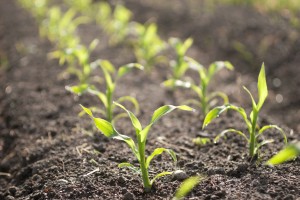Do-It-Yourself (DIY) Vegetable Garden
Growing a vegetable garden yourself can be fun and satisfying for a number of reasons. It’s so exciting to see something grow out of almost nothing, eating something that you’ve grown yourself, and knowing that you are contributing to sustaining the environment. And if these reasons aren’t enough, there’s also the potential that you could earn a sweet little income from starting a vegetable garden as well!
Tips for Planning a DIY Vegetable Garden:
Before you run out to buy seeds, you’ll want to invest a bit of time and brain-power into getting your vegetable garden right. A small amount of time planning will yield big rewards when harvest time comes around. Here are a few tips on planning your own DIY vegetable garden projects:
Start Small
Sometimes passion can get in the way of productivity in gardening. Instead of starting with a 2 acre farm, begin with just 100 square feet (a proven system such as Seed to Cash can help you get started in a small space with little hassle). Don’t try to plant every vegetable that you love all at once, but begin with just two or three that you know are easy to grow. Then gradually build up the size of your backyard garden as you figure out what you are doing.
Work with Nature
Getting the right amount of sunlight is critical to the success of your vegetable garden. Plants need sun to grow, and vegetables are especially needy when it comes to this. Before you decide where to plant, track the sunlight in your backyard to ensure that you have at least 6 (preferably more) hours of sunlight every day throughout the growing season. If you can’t find a spot with this much sunlight, you may need to considered putting your garden in your front yard instead!
Prepare the Soil
Most backyard soil is not ideal for growing vegetables, but this is an easy problem to fix! When you dig your plot, take note of the way the soil feels in your hand. If it feels dry and sandy, you may need to add some organic material—compost preferably. If the soil is sticky, you likely have too much clay content and you can control this by adding coarse sand and coarse organic matter. Before trying to change your soil, it’s best if you can test samples of your soil in several areas of your yard to see where the problems are and how to amend them. Using raised beds is a great way to avoid some of these problems as you have much more control over the way the soil functions.
Careful Watering
Although it’s not exactly complicated, paying attention to how much water your vegetable garden needs is a critical part of success. Don’t water your plants every day out of habit. First, check the soil by placing a finger in about an inch deep. If it feels moist, don’t water it and wait until tomorrow. If it feels dry, do water.
Also, pay attention to where you are watering the plants—try to point he nozzle of the hose over the roots rather than over the leaves. This allows the plant to use the water much more efficiently and effectively.
Growing a DIY vegetable garden can be fun and exciting. And whether you plan to feed your family or sell your vegetables to others, a little bit of planning will go a long way to create a successful garden!


